Anorectal Diseases
Anal Fistula
What is Anal fistula?
Anal fistula, or fistula-in-ano, is an abnormal connection between the epithelialised surface of the anal canal and (usually) the perianal skin.
Anal fistulae originate from the anal glands, which are located between the two layers of the anal sphincters and which drain into the anal canal. If the outlet of these glands becomes blocked, an disease can form which can eventually point to the skin surface. The tract formed by this process is the fistula.
Abscesses can recur if the fistula seals over, allowing the accumulation of pus. It then points to the surface again, and the process repeats.
Anal fistulas per se do not generally harm, but can be very painful, and can be irritating because of the pus-drain (it is also possible for formed stools to be passed through the fistula); additionally, recurrent abscesses may lead to significant short term morbidity from pain, and create a nidus for systemic spread of infection.
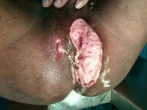
|
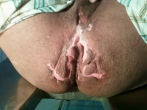
|
| (These diseases are treated at Harjivan Hospital. Image Source : Harjivan Hospital) |
Anal fistulae can present with many different symptoms:
- Pain
- Discharge — either bloody or purulent
- Pruritus ani — itching
- Systemic symptoms if disease becomes infected
Piles
What is Piles?
Hemorrhoids are vascular structures in the anal canal which help with stool control. They become pathological or piles when swollen or inflamed. In their physiological state, they act as a cushion composed of arterio-venous channels and connective tissue that aid the passage of stool. The symptoms of pathological hemorrhoids depend on the type present. Internal hemorrhoids usually present with painless rectal bleeding while external hemorrhoids present with pain in the area of the anus.

|
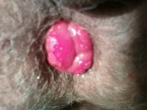
|
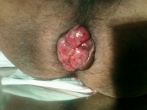
|

|
| (These diseases are treated at Harjivan Hospital. Image Source : Harjivan Hospital) |
- Itching
- Rectal pain
- Rectal bleeding.
- Mucous discharge
- Fecal incontinence.
- Irregular bowel habits (constipation or diarrhea)
- Nutrition (low-fiber diet)
- Increased intra-abdominal pressure (prolonged straining)
- Pregnancy
- Genetics
- Aging
- obesity
- sitting for long periods of time
- keeping stools soft
- to empty bowels as soon as possible after the urge occurs
- Exercise, including walking, and increased fiber in the diet
- Spending less time attempting to defecate
Anal Fissure
What is anal fissure?
An anal fissure is a break or tear in the skin of the anal canal. Anal fissures may be noticed by bright red anal bleeding on the toilet paper, sometimes in the toilet. If acute they may cause severe periodic pain after defecation but with chronic fissures pain intensity is often less. Anal fissures usually extend from the anal opening and are usually located posteriorly in the midline, probably because of the relatively unsupported nature and poor perfusion of the anal wall in that location. Fissure depth may be superficial or sometimes down to the underlying sphincter muscle.
What are the causes of anal fissure?Most anal fissures are caused by stretching of the anal mucosa beyond its capability.
Superficial or shallow anal fissures look much like a paper cut, and may be hard to detect upon visual inspection, they will generally self-heal within a couple of weeks. However, some anal fissures become chronic and deep and will not heal. The most common cause of non-healing is spasming of the internal anal sphincter muscle which results in impaired blood supply to the anal mucosa. The result is a non-healing ulcer, which may become infected by fecal bacteria. In adults, fissures may be caused by constipation, the passing of large, hard stools, or by prolonged diarrhea as well as anal sex. In older adults, anal fissures may be caused by decreased blood flow to the area.
Other common causes of anal fissures include:
- childbirth trauma in women
- Crohn's disease
- poor toileting in young children
Epidemiology
The incidence of anal fissures is around 1 in 350 adults. They occur equally commonly in men and women and most often occur in young adults aged 15 to 40.
PreventionFor adults, the following may help prevent anal fissures:
- Avoiding straining when defecating. This includes treating and preventing constipation by eating food rich in dietary fiber, drinking enough water, occasional use of a stool softener, and avoiding constipating agents such as caffeine.[4] Similarly, prompt treatment of diarrhea may reduce anal strain.
- Careful anal hygiene after defecation, including using soft toilet paper and/or cleaning with water.
- In cases of pre-existing or suspected fissure, use of a lubricating ointment (e.g. hemorrhoid ointments) can be helpful.
In infants, frequent diaper change can prevent anal fissure. As constipation can be a cause, making sure the infant is drinking enough fluids (i.e. breastmilk, proper ratios when mixing formulas). In infants, once an anal fissure has occurred, addressing underlying causes is usually enough to ensure healing occurs.
Pilonidal Sinus
What is Pilonidal Sinus?
A pilonidal cyst, also referred to as a pilonidal abscess, pilonidal sinus or sacrococcygeal fistula, is a cyst or abscess near or on the natal cleft of the buttocks that often contains hair and skin debris.

|
| (These diseases are treated at Harjivan Hospital. Image Source : Harjivan Hospital) |
- Pain
- Discharge — either bloody or purulent
- More common in men than in women
- Ingrown hair
- Excessive sitting
- Excessive sweating
Free booklet
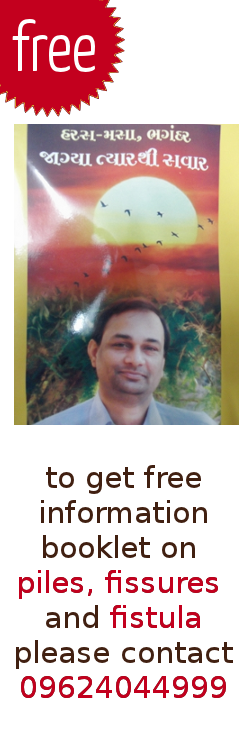
Quick Links
- Email drvishwamitrapatel@gmail.com
Phone
- Mobile 09624044999
